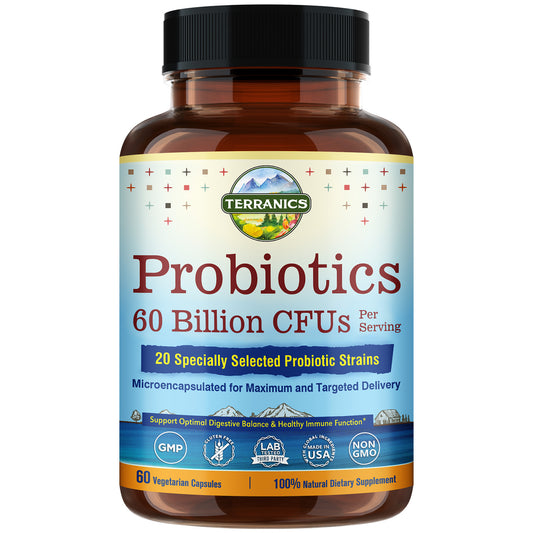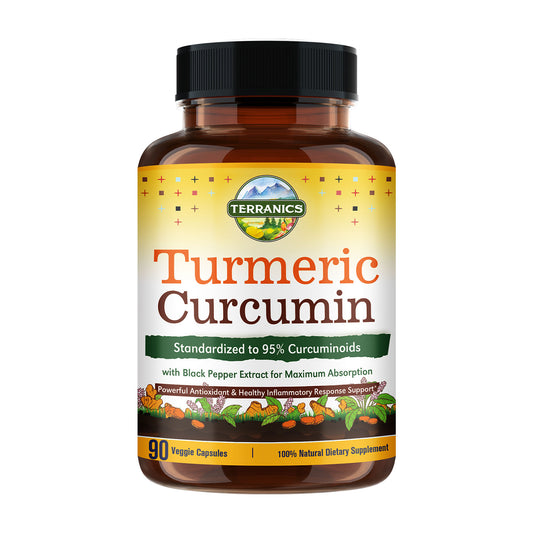
In the realm of herbal medicine, few remedies have captured the attention and curiosity of researchers and health enthusiasts quite like Feverfew (Tanacetum parthenium). This remarkable flowering plant boasts a rich history, dating back centuries, and holds great promise in managing various health conditions. From its traditional uses to the latest scientific research, this comprehensive blog post aims to explore the multifaceted benefits of Feverfew in greater depth, shedding light on its historical significance, mechanisms of action, efficacy in treating headaches and migraines, potential applications beyond these conditions, safety considerations, and the diverse forms and dosages available.
Tracing the Roots: A Historical Journey:
Embarking on a historical voyage, we delve into the origins of Feverfew, tracing its footsteps through ancient civilizations and cultures. Discover how this plant garnered a reputation as a valuable medicinal herb, from its cultivation in southeastern Europe to its inclusion in traditional healing practices around the world.
Unraveling the Active Compounds:
At the core of Feverfew's remarkable medicinal properties lie its bioactive compounds, which have captured the attention of researchers and scientists alike. In our quest to unlock the secrets of this extraordinary herb, we embark on a journey deep into the chemical composition of Feverfew and the intricate workings of its active ingredients, such as parthenolide, that reside within its leaves and flowers.
Parthenolide, the primary and most studied compound of Feverfew, has been the subject of extensive scientific investigation. It possesses potent anti-inflammatory properties, which play a pivotal role in its therapeutic effects. Parthenolide inhibits the production of inflammatory molecules, such as prostaglandins and leukotrienes, that are involved in the body's inflammatory response. By modulating these inflammatory pathways, parthenolide may help alleviate pain, reduce swelling, and contribute to the overall anti-inflammatory response.
In addition to parthenolide, Feverfew harbors a diverse array of other bioactive compounds, each with its own unique contribution to the herb's medicinal potential. These include flavonoids, sesquiterpene lactones, volatile oils, and polyacetylenes, among others. While their precise mechanisms of action are still being unraveled, these compounds are believed to work in synergy to enhance Feverfew's therapeutic effects.
Flavonoids, for instance, are known for their antioxidant properties, which may protect cells from oxidative stress and damage. They also exhibit anti-inflammatory and immune-modulating properties, which can further contribute to Feverfew's overall health benefits.
Sesquiterpene lactones, a group of compounds found in Feverfew, are believed to play a crucial role in its ability to inhibit platelet aggregation and reduce blood vessel constriction. These actions can help improve blood flow and alleviate the symptoms associated with headaches and migraines.
Volatile oils, such as camphor, limonene, and pinene, contribute to Feverfew's distinct aroma and may possess antimicrobial and analgesic properties. These volatile compounds are thought to contribute to the overall therapeutic effects of Feverfew, enhancing its anti-inflammatory and pain-relieving properties.
Polyacetylenes, another group of compounds found in Feverfew, have shown potential in inhibiting the growth of certain cancer cells and exerting antimicrobial effects. While further research is needed to fully understand their implications, the presence of polyacetylenes adds to the complexity of Feverfew's therapeutic potential.
By delving into the chemical composition and intricate workings of these bioactive compounds, we gain a deeper understanding of how Feverfew harnesses its medicinal powers. While parthenolide stands out as a key player, it is the collective action of these compounds that contributes to the overall health benefits of Feverfew, making it a fascinating subject of ongoing scientific exploration.
Conquering Headaches and Migraines:
Feverfew's reputation for alleviating headaches and migraines has garnered significant attention from traditional healers and modern researchers alike. In our quest to uncover the true extent of this herb's therapeutic prowess, we embark on a comprehensive examination of the scientific studies conducted to understand Feverfew's effects on these debilitating conditions. By delving into the underlying mechanisms, we gain valuable insights into how Feverfew may modulate inflammation, reduce blood vessel constriction, and provide much-needed relief for individuals plagued by recurring headaches and migraines.
Scientific exploration has revealed that headaches and migraines are complex conditions with multifaceted underlying causes. While the exact mechanisms are not yet fully understood, researchers have made substantial progress in unraveling the potential mechanisms by which Feverfew exerts its beneficial effects.
One key aspect of Feverfew's impact on headaches and migraines lies in its ability to modulate the inflammatory response within the body. Inflammatory processes play a significant role in the development and progression of headaches and migraines. Feverfew, with its rich content of bioactive compounds, including parthenolide, has been shown to inhibit the release of inflammatory substances, such as prostaglandins and cytokines, which are known to contribute to the initiation and maintenance of pain. By tempering the inflammatory response, Feverfew may help reduce the severity and frequency of headaches and migraines.
Furthermore, Feverfew is believed to possess vasodilatory properties, meaning that it can help widen blood vessels and improve blood flow. Blood vessel constriction is a common characteristic of migraines, leading to reduced oxygen supply and heightened pain sensitivity. Feverfew's ability to promote vasodilation may counteract this constriction, potentially alleviating migraine symptoms and improving overall blood circulation to the brain.
In addition to its anti-inflammatory and vasodilatory effects, Feverfew may also impact the production and release of neurotransmitters involved in pain signaling. Serotonin, in particular, has been implicated in the pathophysiology of migraines. Feverfew is thought to inhibit the release of serotonin from platelets, potentially reducing the intensity and duration of migraines.
Expanding Horizons: Potential Applications Beyond Headaches:
While Feverfew's association with headaches and migraines is well-established, emerging research has begun to shed light on its potential applications beyond this realm. This humble herb, with its rich history and traditional use, has piqued the interest of scientists and health enthusiasts alike. In this exploration, we delve into the promising studies that highlight Feverfew's potential in managing a range of conditions, including arthritis, digestive disorders, menstrual irregularities, and skin conditions. By examining the available evidence, we gain a glimpse into the diverse therapeutic possibilities of this remarkable botanical.
Arthritis: The anti-inflammatory properties of Feverfew make it a compelling candidate for managing arthritis, a chronic condition characterized by joint inflammation and pain. Preliminary studies suggest that Feverfew may help reduce pain, swelling, and stiffness associated with various forms of arthritis, including rheumatoid arthritis and osteoarthritis. By modulating inflammatory pathways and inhibiting the production of inflammatory molecules, Feverfew holds promise as a natural approach to alleviate the burden of arthritis.
Digestive Disorders: Feverfew's potential extends to digestive health as well. Research indicates that Feverfew may exhibit gastroprotective effects, helping to soothe and protect the lining of the gastrointestinal tract. It may also possess antispasmodic properties, potentially easing gastrointestinal muscle spasms and relieving symptoms associated with conditions such as irritable bowel syndrome (IBS) and dyspepsia. While more studies are needed, Feverfew's potential in promoting digestive wellness presents an intriguing avenue for further exploration.
Menstrual Irregularities: Traditional healers have long utilized Feverfew to address menstrual irregularities and discomfort. Scientific investigations have begun to validate these traditional uses, with studies suggesting that Feverfew may help regulate menstrual cycles and alleviate associated symptoms, such as cramping and bloating. By modulating hormonal levels and reducing inflammation, Feverfew may offer a natural approach to support women's reproductive health.
Skin Conditions: Feverfew's therapeutic potential extends to the realm of dermatology, with studies exploring its efficacy in managing various skin conditions. The herb's anti-inflammatory and antioxidant properties make it a compelling candidate for alleviating inflammatory skin conditions, such as eczema and psoriasis. Additionally, Feverfew's potential as a photoprotective agent has drawn interest, as it may help protect the skin from the harmful effects of ultraviolet (UV) radiation. As research in this area continues to unfold, Feverfew holds promise as a natural ally for promoting skin health and addressing dermatological concerns.
While the evidence supporting Feverfew's potential applications beyond headaches is still emerging, the preliminary findings are promising. It is important to note that further research, including well-designed clinical trials, is needed to fully understand the extent of Feverfew's therapeutic benefits in these areas. Additionally, individual responses and optimal dosage regimens may vary, necessitating guidance from healthcare professionals for those considering Feverfew supplementation.
Safety First: Considerations and Precautions:
As with any herbal remedy, understanding the safety considerations is paramount. We delve into the potential side effects, contraindications, and interactions that may arise with Feverfew usage. By providing practical guidance, we empower readers to make informed decisions and seek professional advice to ensure their well-being.
Forms and Dosages: Navigating the Options:
Feverfew comes in various forms, each with its own benefits and considerations. We explore the pros and cons of capsules, tablets, liquid extracts, and dried herb for teas, shedding light on the optimal dosages for different forms and purposes. Armed with this knowledge, readers can confidently navigate the diverse market offerings.
The Tapestry of Tradition: Folklore and Cultural Significance:
Journeying through the tapestry of tradition, we unravel the rich folklore and cultural significance surrounding Feverfew. From ancient beliefs and rituals to its integration into traditional healing systems, we gain a deeper appreciation for the reverence bestowed upon this herbal remedy.
Towards a Brighter Future: Current Research and Future Outlook:
The scientific exploration of Feverfew continues to evolve, with ongoing research shedding new light on its potential applications. We explore recent studies, clinical trials, and emerging areas of research, providing a glimpse into the future of Feverfew as a natural remedy.
Conclusion
Feverfew stands as a testament to the power of traditional herbal remedies. With its well-documented history, scientifically supported benefits, and the ongoing exploration of its potential applications, Feverfew offers a ray of hope for individuals seeking natural alternatives. By delving into its roots, mechanisms of action, efficacy in managing headaches and migraines, broader potential applications, safety considerations, and the diverse forms available, we embark on a journey of discovery that showcases the remarkable potential of this ancient herbal remedy.




